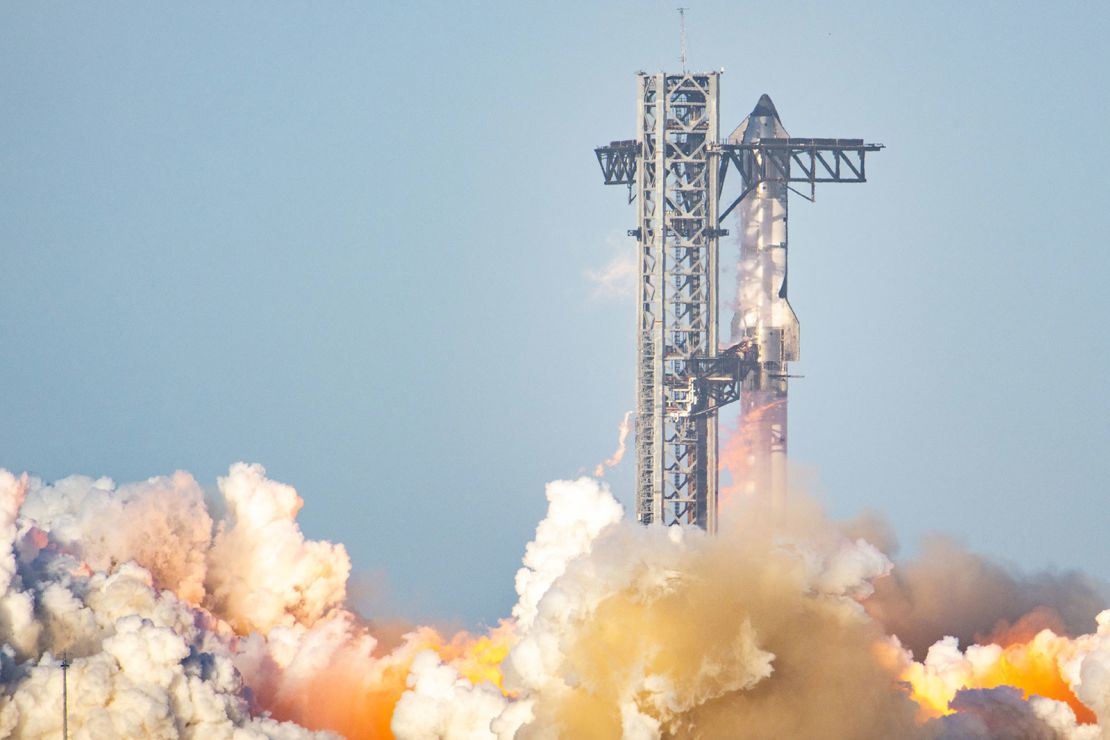SpaceX’s towering Starship rocket faced yet another fiery fiasco on Thursday, March 6, 2025, as its latest test flight ended in a spectacular midair explosion. Launched from the Starbase facility in Boca Chica, Texas, the 403-foot behemoth initially roared into the sky with promise, only to lose control and disintegrate less than 10 minutes later, scattering flaming wreckage over Florida’s horizon.
The mission started strong: SpaceX’s innovative giant mechanical arms snagged the first-stage booster back at the pad in a dazzling display of engineering. But the upper spacecraft, aiming for a controlled splashdown in the Indian Ocean, faltered when its engines began shutting down unexpectedly. Spiraling wildly at nearly 90 miles (150 kilometers) high, the rocket lost contact with mission control, leaving its fate—and that of four mock satellites onboard—uncertain. Dramatic images of glowing debris lit up social media, with sightings reported from Cape Canaveral to the Bahamas.
This marks the second consecutive Starship test to end in flames, following a similar explosion two months ago that peppered the Turks and Caicos with debris. SpaceX dubbed the incident a “rapid unscheduled disassembly,” a tongue-in-cheek nod to the chaos. “We’re getting the hang of this,” quipped flight commentator Dan Huot, hinting at the team’s growing familiarity with such setbacks.
The Federal Aviation Administration (FAA) has stepped in, demanding a full investigation before SpaceX can try again. Meanwhile, Orlando International Airport briefly halted flights as a precaution against falling debris, underscoring the real-world ripple effects of the mishap.
Despite the fiery failure, SpaceX remains undeterred. The company had tweaked Starship’s flaps, computers, and fuel systems after the last explosion, hoping to eventually guide the spacecraft back to its launch site. Thursday’s test was meant to rehearse satellite deployment—featuring mock-ups mimicking the Starlink constellation—but the payload never got its moment in orbit.
Elon Musk’s brainchild, Starship, is the world’s largest and most powerful rocket, with grand ambitions to ferry NASA astronauts to the moon and, eventually, settlers to Mars. While the booster’s recovery was a win, the upper stage’s demise highlights the steep challenges ahead. SpaceX launches from Texas’ southern tip but is also crafting a second Starship hub at Cape Canaveral, where its Falcon rockets already soar.
As the dust settles—or rather, the debris cools—SpaceX is poring over flight data to pinpoint what went wrong. With NASA and Musk’s Martian dreams riding on this rocket, every explosion is a lesson, and the cosmos is watching.

